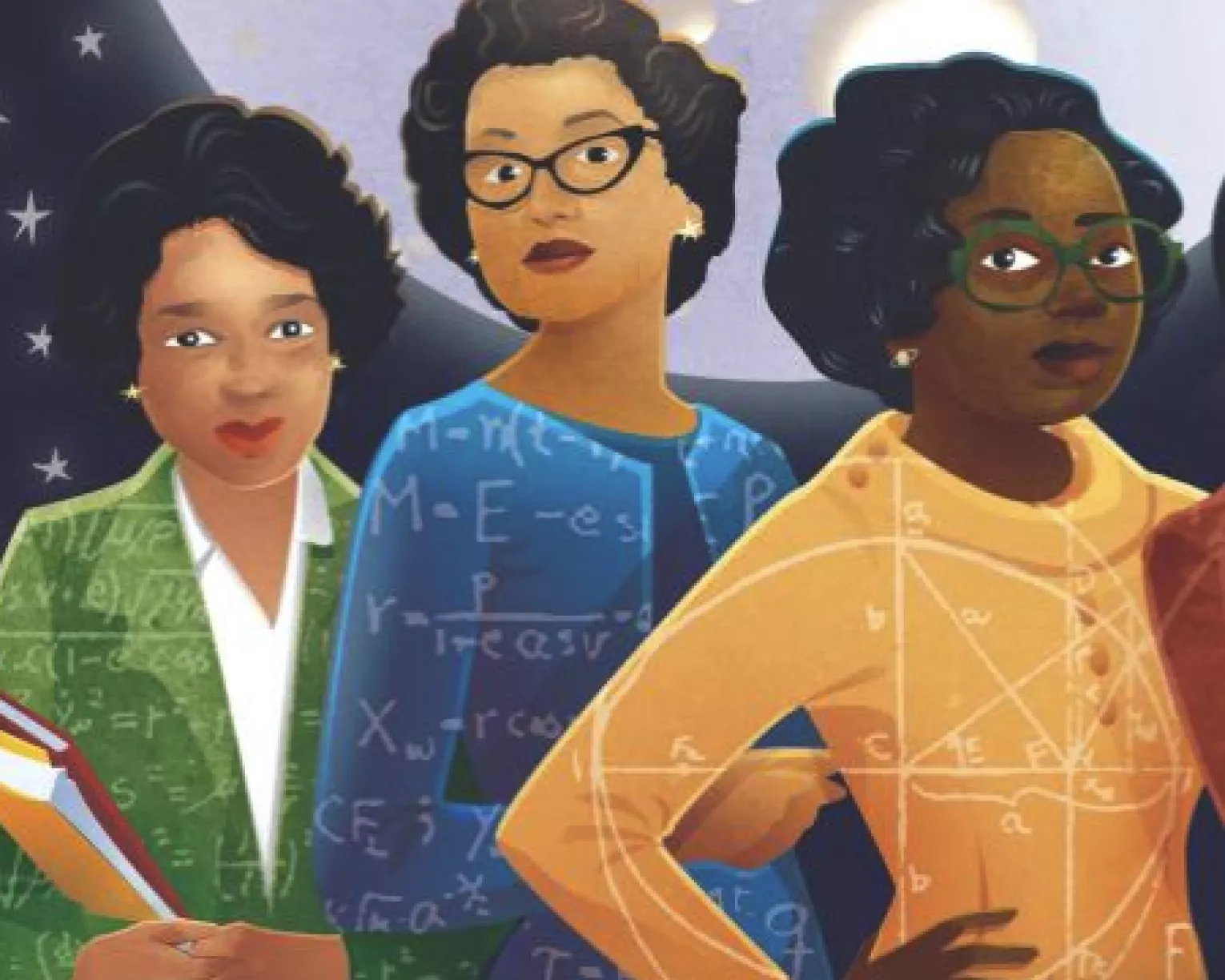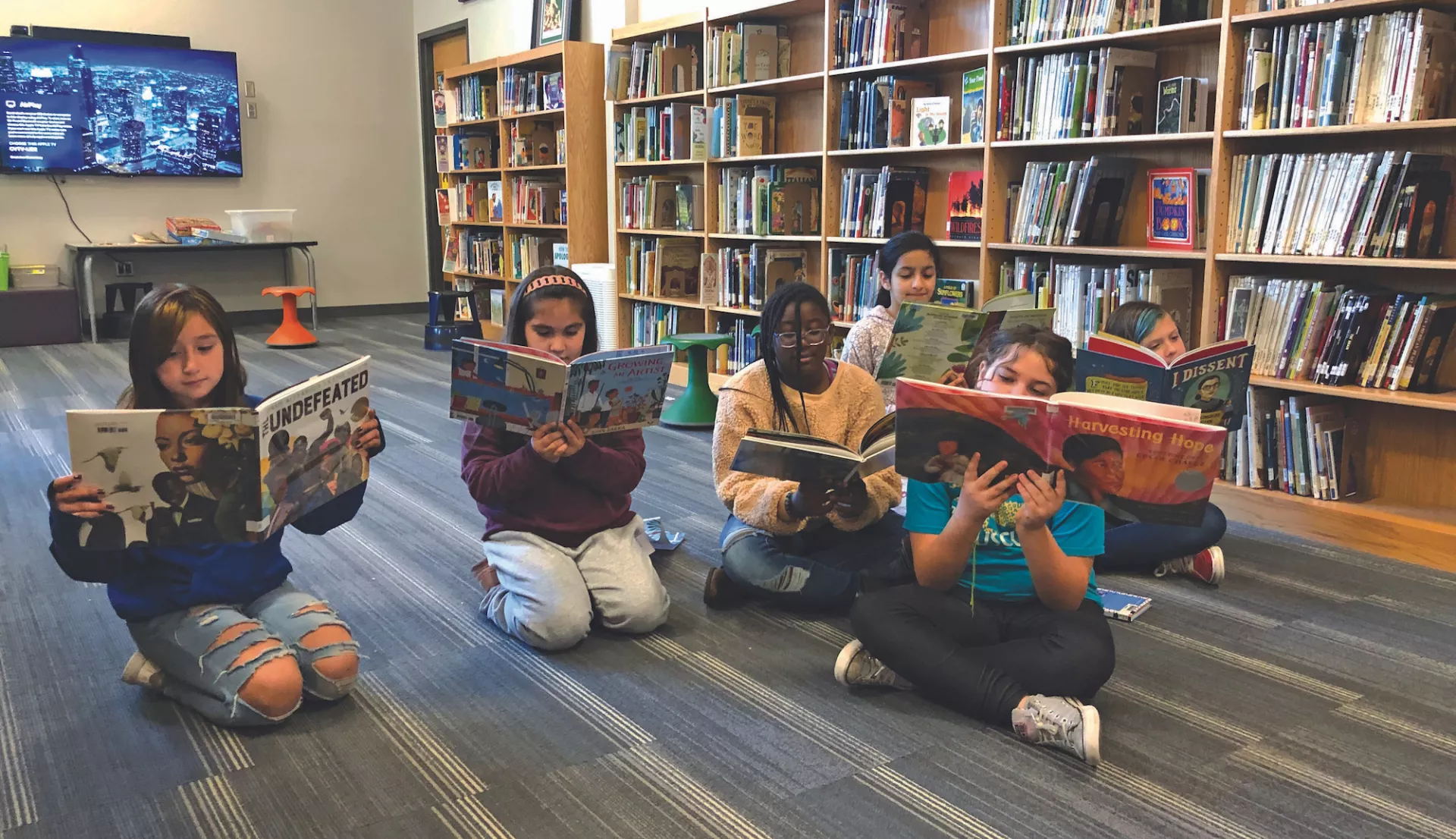Every Sunday after church, CJ and his Nana ride the bus across town to help out at a soup kitchen. Along the way, CJ asks a lot of questions: “Why don’t we have a car?” “Why do we always have to go after church?” And, “Why is it so dirty around the soup kitchen?”
“Sometimes when you’re surrounded by dirt … you’re a better witness for what’s beautiful,” Nana answers. CJ wonders how his Nana finds beauty in places he never thought to look.

CJ and Nana are characters in Matt de la Peña’s The Last Stop on Market Street, a favorite book of library media specialist Mary Ann Schliesman, who works at Crestview Elementary, in Merriam, Kan. She loves how de la Peña’s pages help students see the world anew and find beauty in unexpected places. The book also shows them how easy it is to make a difference in their communities and in other people’s lives.
Recently, the book inspired a service project in which Schliesman’s students collected snacks, personal hygiene products, and other items to be distributed to a shelter.
“This is a story that tells kids that you don’t have to be rich to help others in your community. You can just be a regular kid willing to help out those in need. This is one of so many wonderfully impactful books out in children’s literature today,” Schliesman says.
The Power to Inspire
Educators, like Schliesman, recognize the power of books to ignite a student’s imagination and passion. Books can also show students that there are others who look like them and think like them, who may even feel like them, and who are making the world a better place in profound ways.
The message young people take from these books: I can make a difference, too.
Students love stories about regular people who do incredible things, Schliesman says, and she regularly shares biographies and autobiographies. Some of her favorites include: Harvesting Hope: The Story of Cesar Chavez by Kathleen Krull; Rosa by Nikki Giovanni; and Radiant Child: The Story of Young Artist Jean-
Michel Basquiat by Javaka Steptoe.
“Students see that none of these influential people came from affluent families, they all struggled with dynamics of social class and circumstances beyond their control,” she says. “But with their fire, passion, determination, and a whole lot of hard work, they were successful in achieving greatness and impacting our world in a positive way.”
NEA’s Read Across America Can Light a Spark
The Shawnee Mission School District, where Schliesman works, models its reading program on NEA’s Read Across America, which celebrates diverse books and authors and recommends titles that can inspire readers to be changemakers. District teachers choose selections from the Read Across America
calendar and promote each month’s theme and recommended titles.
Check out these inspirational books from the 2022 – 2023 calendar, which provides 12 months of book recommendations for all ages:
Amy Wu and the Warm Welcome by Kat Zhang
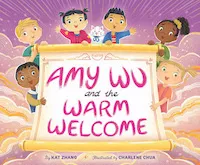
In this follow-up picture book to Amy Wu and the Perfect Bao and Amy Wu and the Patchwork Dragon, Amy finds a way to welcome a new classmate who has just come from China and doesn’t speak much English. This book shows students how to make others feel welcome.
Because Claudette by Tracey Baptiste
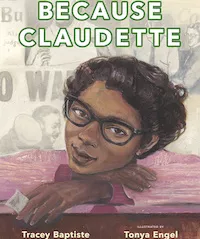
This picture book biography celebrates Claudette Colvin, an Alabama teenager who, in 1955, helped launched the Montgomery bus boycott—a protest against segregation. It shows readers the power of collective action.
Where I Belong by Marcia Argueta Mickelson
In this young adult novel, Guatemalan American high school senior Millie Vargas challenges the “single story,” or one-sided immigration narrative.
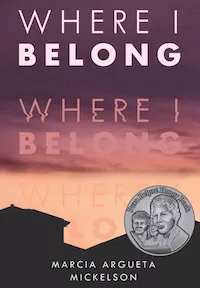
The story shows students how sharing their personal stories can be empowering and impactful.
Healer of the Water Monster by Brian Young
When Nathan goes to visit his grandma at her summer home on the Navajo reservation, he thinks it will be a boring summer. But when he meets Pond, a water monster from the Navajo creation story who has been poisoned by radiation, Nathan is determined to save his new friend. The story shows students how the Navajo boy summons the courage to help his family and fight for environmental justice.
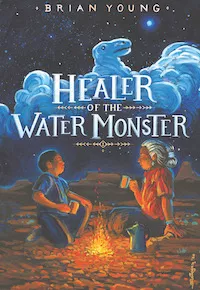
Creating a New Generation of Changemakers
Read Across America Ambassador Marley Dias, 17, inspires young people to become agents of change.
Marley Dias is the powerhouse behind the #1000blackgirlbooks campaign to collect and donate books about Black girls, which used to be few and far between at booksellers and libraries.
Dias, who attends Harvard University, spoke to NEA Today about how Read Across America books that celebrate diversity and focus on themes, such as “Activate Inner Strengths” and “Create Change in the World,” can help young readers realize their potential as changemakers.
What book sparked you to take action and make changes in your world?
When I was nine, I got Brown Girl Dreaming by Jaqueline Woodson as a Christmas present. It was a book that challenged me, that told my story, that made me feel understood, and helped me discover who I was. When I saw a lack of diversity and a lack of Black girl characters in the books at school, I thought about the messages of Brown Girl Dreaming, which gave me words I could use to stand up for myself and words for my feelings as a Black girl underrepresented in literature. That’s when I started planning the #1000blackgirlbooks campaign.
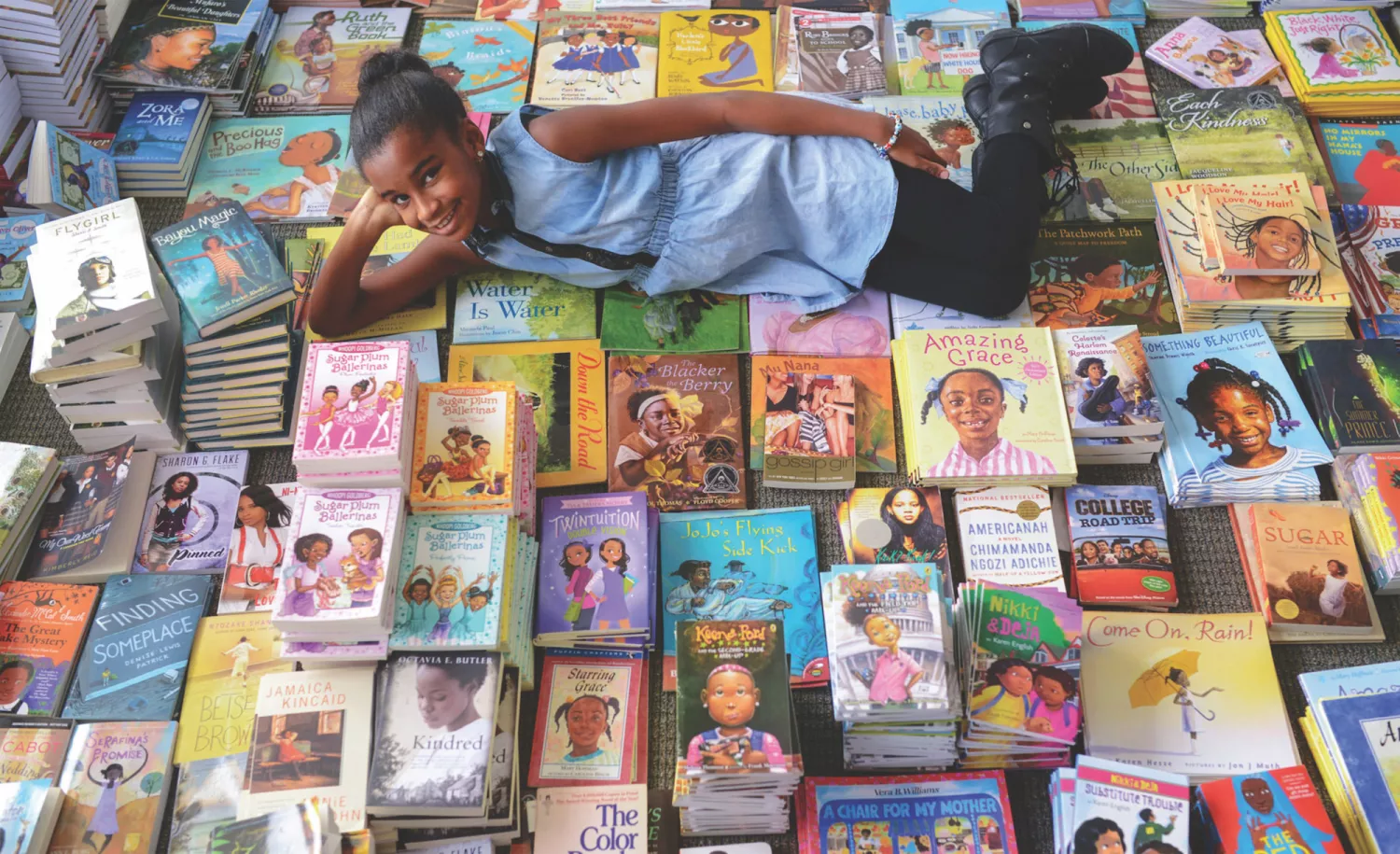
Why should educators make it a priority to include inspiring, diverse books in lessons?
Power has always shifted to the next generation of artists, dreamers, and changemakers. I’d ask educators and everyone to consider the dangers of not telling our young people to believe in their self-efficacy and that they can and should be active members of a community and citizenry. Their actions to effect positive change will benefit our entire society. What you pour into this generation will serve us all.
How does banning books harm young readers’ ability to become agents for positive change?
When we ban books, we are limiting exposure to ideas. This limitation to ideas stunts our ability to understand and connect with each other and to imagine.
The books that are being banned clearly demonstrate an attempt to erase or reduce the stories of vulnerable and marginalized populations. The consequences are far-reaching and can damage kids’ ability to draw accurate conclusions about the world around them, which quashes innovation and equity.
